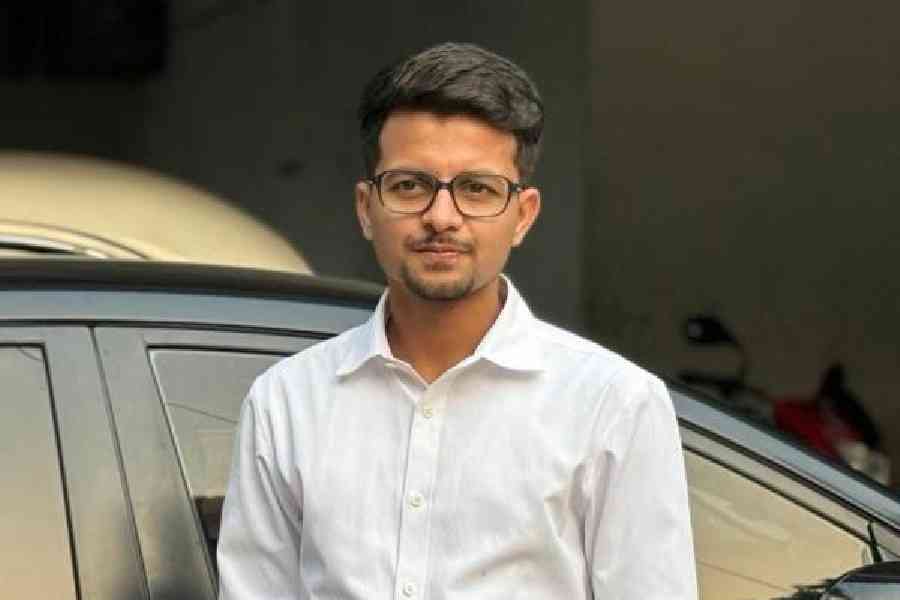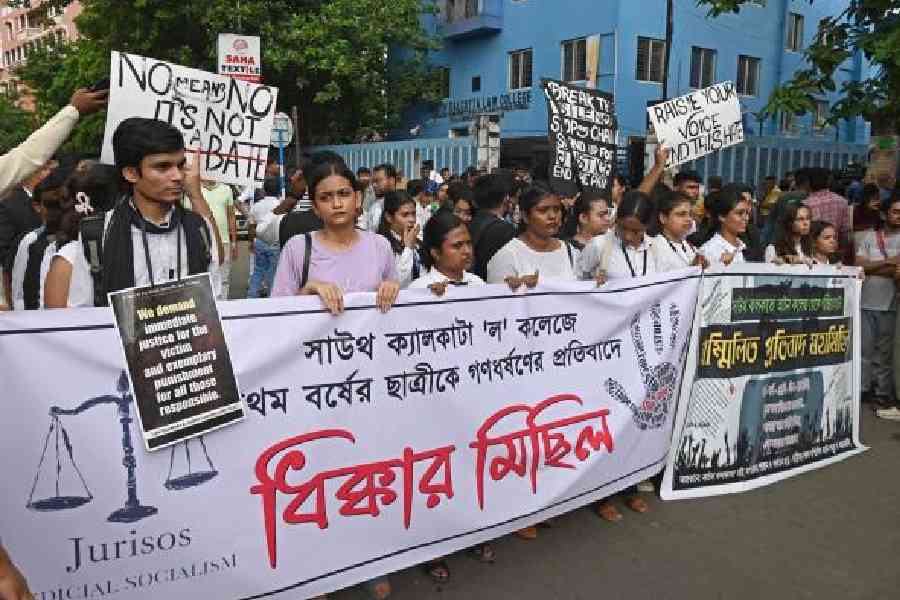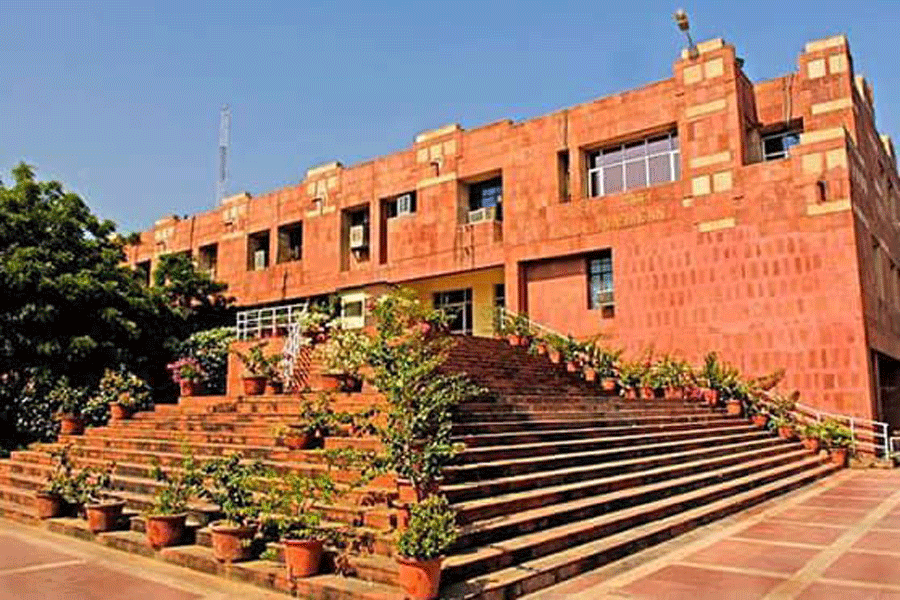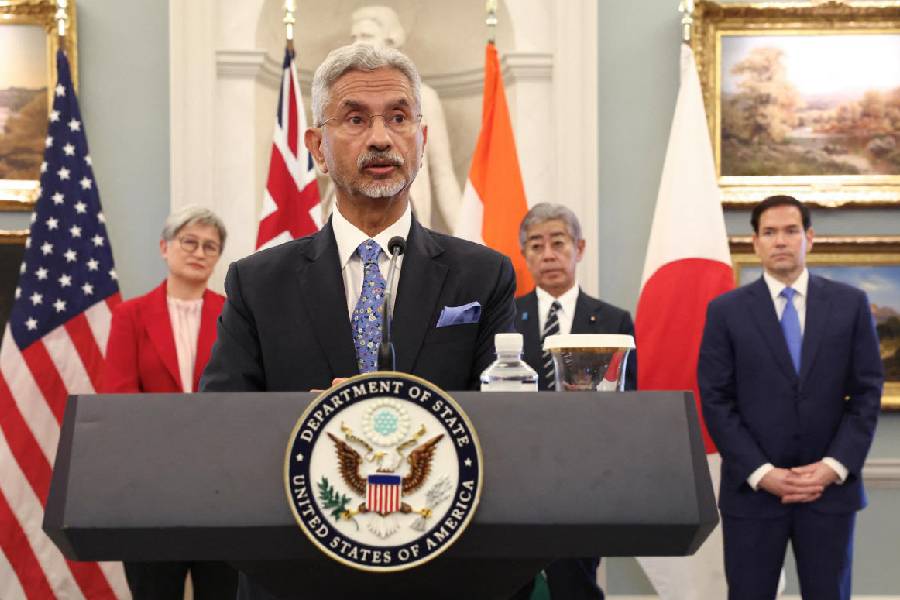 |
| From left to right: Buddhadeb Dasgupta, Jhamu Sugandh, Soumitra Chatterjee, Prosenjit, Koel and Ranjit Mullick. Picture by Aranya SenHeena Gorsia, Piu Sarkar, Swarup Dutta, June Tomkyns and Abhishek Dutta after the talk on Friday. Picture by Rashbehari Das |
A star-studded evening on Thursday was the appropriate place to launch a “strategic alliance” between Jhamu Sugandh and Prosenjit. Under the production house they have jointly set up, Tollywood’s leading man and the producer of films like Hum Dil De Chuke Sanam and Lagaan will present six films in Tollywood in the span of a year. Here are the highlights of the event:
The show-stealers: Host Prosenjit in a grey suit, Jishu Sengupta sporting a new look and Koel Mullick in a pretty black dress. Also spotted were Buddhadeb Dasgupta, Soumitra Chatterjee, Harsh and Madhu Neotia, Dipankar Dey, Ranjit Mullick, Pallavi Chatterjee, Gargi Roychoudhury and Prosenjit’s wife Arpita Pal. From directors to actors, producers to distributors — tinsel town had flocked to Taj Bengal on Thursday evening to be seen and heard.
The winners: Buddhadeb Dasgupta, Haranath Chakraborty, Swapan Saha, Anup Sengupta, Sudeshna Roy, Abhijit Guha and TV serial director Anindya Sarkar have been handpicked by the Jhamu Sugandh team for six big-budget projects over the next 12 months. Among them, Dasgupta is the only film-maker to have the Jhamu Sugandh tag for two projects — the upcoming Swapner Din and the Madhuri Dixit-starrer Hridayer Katha. Also featuring Prosenjit, the double version film (Bengali and Hindi) goes on the floors in October.
Jhamu-speak: I struck a good rapport with Prosenjit in Bolpur on the sets of Buddhadeb Dasgupta’s Swapner Din, which is my first Bengali film as producer. Soon, I realised that our thoughts were clicking. I had decided to produce Bengali films long ago and thought this was the most opportune time to start.
Our production house will provide the best technology to Bengal film-makers so their work is on par with the national and international products. There’s a very good market for Bengali films.
We have selected the most popular film-makers of Bengal with an aim to make around six films this year. In keeping with our tradition of giving a chance to new talent, TV serial maker Anindya Sarkar has been chosen.
Prosenjit points out: My role would be to execute the entire production. From selecting the story, cast and director and deciding the budget, Jhamuji has left everything to me. After finalising the budgets, I will have a talk with him and proceed accordingly. The budgets for the films will be slightly more than the normal fare in Tollywood.
There are plenty of Bengalis living across the world who want to see family dramas with lots of emotion. The overseas market is just waiting to be tapped.
Fashion was the fare on offer on Friday afternoon at Little India, as the Elgin Road design studio hosted a talk on fashion trends. An eclectic mix of personalities from different fields related to fashion shared their views with the small crowd which had gathered to listen to their fundas.
The meet, conceived by designer Abhishek Dutta, had fashion educators Heena Gorsia and Swarup Dutta, costume designer Geetanjali Alagh Jolly, hair stylist June Tomkyns and model-actress Piu Sarkar on the panel.
Each speaker had their own definitions of what fashion trends are all about. For Heena, “trends are about a certain kind of like-minded people thinking about the same thing at the same time and endorsing them”. While Swarup totally agreed with her, Piu felt that “the only thing constant in fashion is changing trends”.
Mass trends have given way to individuality, the panelists said. “Today, people want to project their identity through what they wear. Earlier, this awareness was not there and accessibility was also a problem. So, if somebody made something nice, it became a mass trend,” said Heena. “Today, however big a designer is, not everybody will like his style,” she added.
And this led to the recognition of the increasing need of designers. “As a result of this strong individuality factor, we need more designers to understand and cater to different psyche,” was the common verdict.










